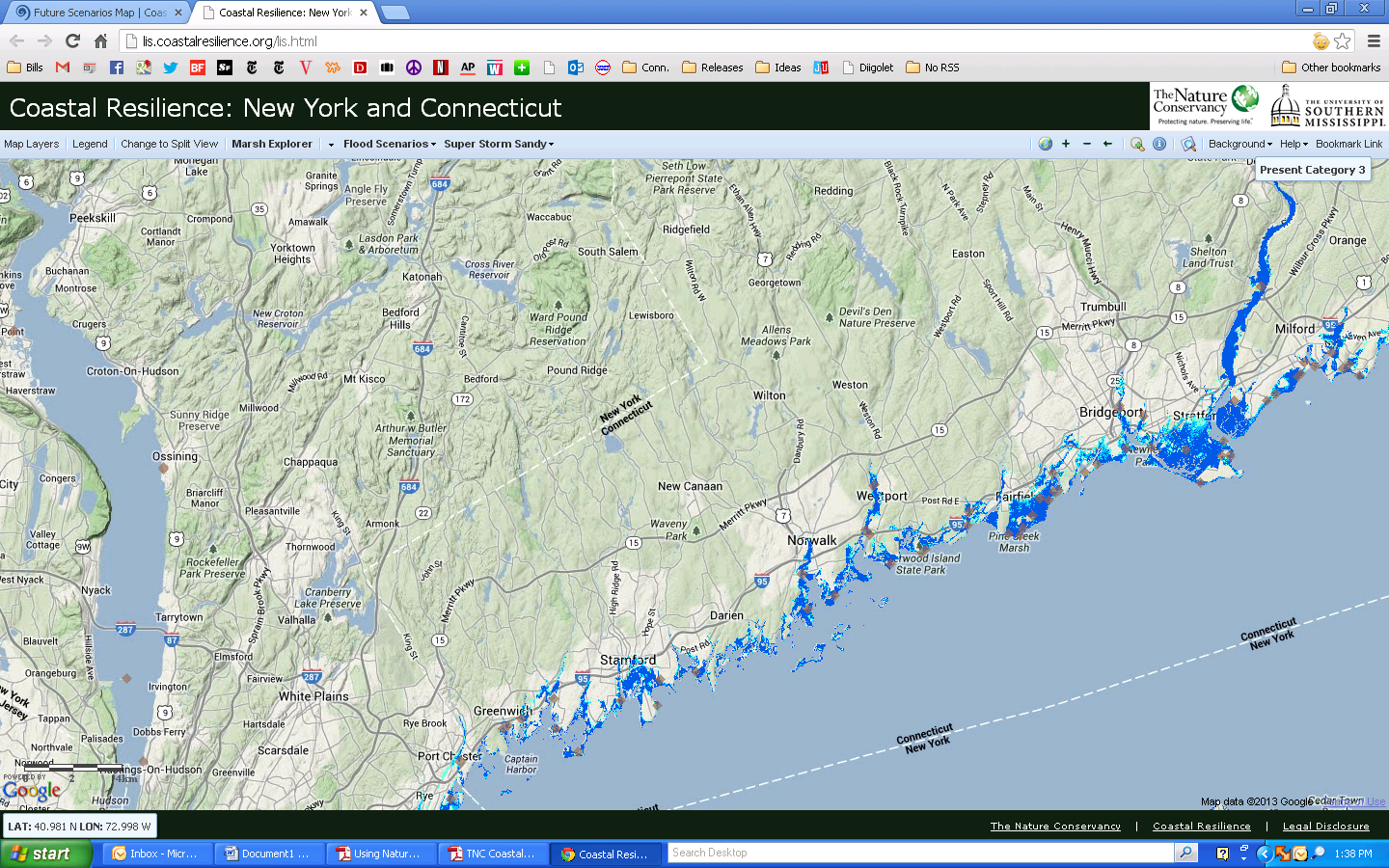Learning from Sandy
The six days of power outages following Hurricane Sandy spurred a litany of complaints against utilities from an outraged public. But an official review of Connecticut”™s electric and gas providers has ruled the companies prepared and responded to the storm “in a generally acceptable manner.”
More than 1.1 million people lost power during the storm, shorting out the daily routine of electricity-dependent residents. Yet given the circumstances the state”™s electric and gas companies did respond in a timely and effective manner, the Public Utilities Regulatory Authority ruled Aug. 21.

With winds reaching 85/mph and coastal flooding up to 8 feet, the October storm damaged utility poles and destroyed transformers. The storm was one of the worst recorded in the history of the state. But the utilities”™ response was much better than previous efforts following Hurricane Irene and the 2011 October snowstorm, said Arthur H. House, PURA chairman.
“You never declare a victory in the field; there”™s always ways to improve,” House said. “But the storm response was much better.”
Coordination and communication between electric companies and municipalities improved. More supplemental line workers were deployed and tree trimming efforts limited additional damage, House said. However PURA officials did issue several orders to continue improvement efforts.
Employees at Connecticut Light & Power (CL&P) and United Illuminating must provide a report by March 2014 on the feasibility of decentralized town emergency generators. And employees must continue to implement storm damage software for further operational efficiencies. New software can help assess damage and provide central reporting materials needed for repairs.
“This is New England; we get hurricanes and ice storms,” House said. “When they come, we shouldn”™t be surprised. We should be prepared.”
By law, PURA is required to review the performance of the state”™s electric and gas companies after an emergency disrupts service for more than 10 percent of the companies”™ customers for longer than 48 hours.
Tricia Taskey Modifica, a Connecticut Light & Power spokesperson, said CL&P officials were pleased to see PURA recognize their improved performance. PURA reports on previous storms ruled the companies”™ storm response was inadequate.
However, after implementing and practicing new response strategies, Modifica said the company has been able to improve its response. She said the company was particularly proud of its improved communication with customers before and during the storm. The group hosted daily media events, kept active social media accounts and sent out town liaisons every day with specific information to help restoration efforts.
Now the company is in the midst of training employees on its new internal communications platform, which will help coordinate what equipment is needed in the field to restore service. Last year, the company also doubled its vegetation management program, trimming trees along 4,420 miles of its distribution system.
While the state”™s tree-trimming budget had remained flat the past five years, funding is now nearly three times as high, said Joseph J. McGee, co-chair of Gov. Dannel P. Malloy”™s Two Storm Panel. Almost every downed wire during Hurricane Sandy was the result of a fallen tree, he said. But with a $25 million annual trimming budget, future storm damage might be limited.
MORE PREPARED
With improved communication and tree trimming, among other efforts, McGee said he believes the state is more prepared this hurricane season compared with last year. McGee is also the vice president of public policy at the Business Council of Fairfield County.
After two statewide practice drills and several major storms, the state is putting together a more coordinated response strategy, McGee said. Municipalities and utilities are communicating and delegating jobs better and there”™s an emphasis on hardening the infrastructure and installing stronger poles and wires.
It”™s getting to the point where more detailed planning can take place, McGee said, such as figuring out what to do with seniors”™ pets or how those in shelters can receive involved medical attention.
“That”™s a big shift,” he said. “We can”™t pretend we”™re fully prepared because we”™re not. But we”™re moving in the right direction.”
If a Category 2 or 3 hurricane swept over the state, McGee said, the state would still have major problems. Dozens of town centers are built on the shore along flood plains and several homes aren”™t built high enough, according to new FEMA flood maps.
People have to decide if they”™re either moving out or up, McGee said. Insurance rates will likely go up and the cost to raise homes is an expensive investment. If people can”™t afford it, they”™ll have to move out. The state will also need to adjust its building code to ensure the infrastructure can withstand more severe weather, McGee said.
“Climate change is real,” McGee said. “The impact of it and how we make our homes and businesses more resilient will really be the big topic of the next 10 years. The storms we”™re hit by over that period will reinforce that. The sooner we start acting on it, the better. But it”™s going to be expensive.”
For the past 300 years people have been deciding where to build and now residents are affected by those past decisions, said Adam Whelchel, director of science at the Nature Conservancy in Connecticut.
Some sewer systems can handle as little as 1 inch of flooding, when they need to handle 8 inches in a 24-hour period, Whelchel said. Going forward, developers will need to build smarter and take into consideration what scientists are saying about global warming and the sea level rising, he said.
The largest nature nongovernmental organization, the Nature Conservancy is in the process of helping several Fairfield County towns ”” including Bridgeport, Fairfield, Monroe, Easton, Trumbull and Stratford ”” identify what infrastructure is at risk of extreme weather and ways combat flooding.
“We”™re increasing flexibility and avoiding future costs,” Whelchel said. “We have the opportunity to benefit from past extreme weather events by undoing the decisions of the past and proactively planning for a more resilient future.”